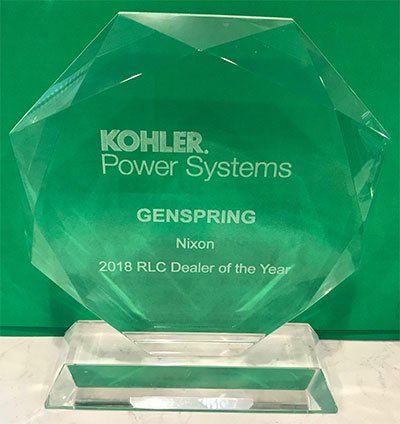How We Install a Whole House Generator
We rely upon electricity to keep our homes comfortable and secure so we’re able to enjoy all of the benefits and conveniences today’s electric technology has to offer. Of course we’d rather run the dishwasher than wash every utensil by hand after a big family dinner on Sunday evening. It’s also nice to have your cell phone fully-charged by the time you wake up in the morning so you can check the weather, email, and of course – Facebook. So it’s no wonder the United States has increased its electricity consumption by 196 billion kWh between 2007 and 2017 1 . (For perspective, that’s enough to power over 130 million 50” flat-screen TVs for one full day 2 !) As a side-effect of our dependency on electronic devices, we have also experienced the sudden rush of fear when when electric utility service goes down and all of those conveniences are temporarily lost.
Homeowners who feel frustrated and burdened by repeat power outages find solace in installing a whole house generator, which sparks two key questions to begin the process: “How do I determine what size generator I need?” And, “How do I install a generator to connect my home?”
Step one: Determine what your home generator will power
When the GenSpring Power team meets with any prospective customer, it’s common for the first series of questions to center around defining what they want their home generator to do when the power goes out. More often than not the answer is, “Everything, if possible!”
In defining the load requirements for the generator, we start at the electric panel(s) where a visual inspection of the breakers reveals the size of the various loads within the home. This allows us to help the customer better understand their requirements and how they use electrical energy. This typically leads to a discussion about the difference between automatic vs. discretionary loads. Automatic loads (e.g. air-conditioning, water heaters, hot tubs) must be anticipated to run whether you’re home or not, while discretionary appliances (e.g. clothes dryers, ovens, small appliances and lights) includes those where you’ll make a conscious decision to use. By knowing these differences, we can help you understand why we recommend a particular size generator system, tailored for your specific needs.
Step two: Determine where your home generator will be located
The next step is deciding on the best location for your new generator. Sometimes we’ll need to compromise between personal preference and what is physically possible due to existing construction and the location of utilities, such as your electric meter and gas or propane service. Most installations will allow us to install the automatic transfer switch is adjacent to the electric service entrance with the generator nearby, but sometimes we need to consider another location. Once the location has been agreed upon and you’re ready to move ahead, we can outline the cost and schedule generator installation.
Step three: Installing your generator
After scheduling your installation, our service team will visit your home to prepare the site and set the generator. Most of the time these two are performed at the same time. However, if you’re installing a large, liquid cooled generator – above 20kW – then we’ll perform a two-step process instead as we’ll first need to pour a slab and allow it to cure before setting the generator.
After setting the generator, the electric and gas installation follows. When installing the automatic transfer switch, your power will be turned off for a short period of time to allow the interface to be made. We will also connect the generator power and control wiring to the transfer switch. (The same is true for the gas connection when tying it in, but don’t worry, we always relight any pilots if necessary!) Again, this often occurs at the same time, or within a day or two, depending on your schedule and our workload.
Step four: Testing your standby generator
After installation is complete, we will inspect everything, test your brand-new generator and even simulate a power outage in order to allow the generator to switch on and fully operate. We will also provide a complete orientation of the generator system for you and your family so feel comfortable with the basic operation and controls. Congratulations, your home generator installation is now complete, and you are ready for the next storm!
At GenSpring Power, we have helped over one thousand customers navigate this process. Please
let us know how we can help you and your family to make this as simple as possible.





